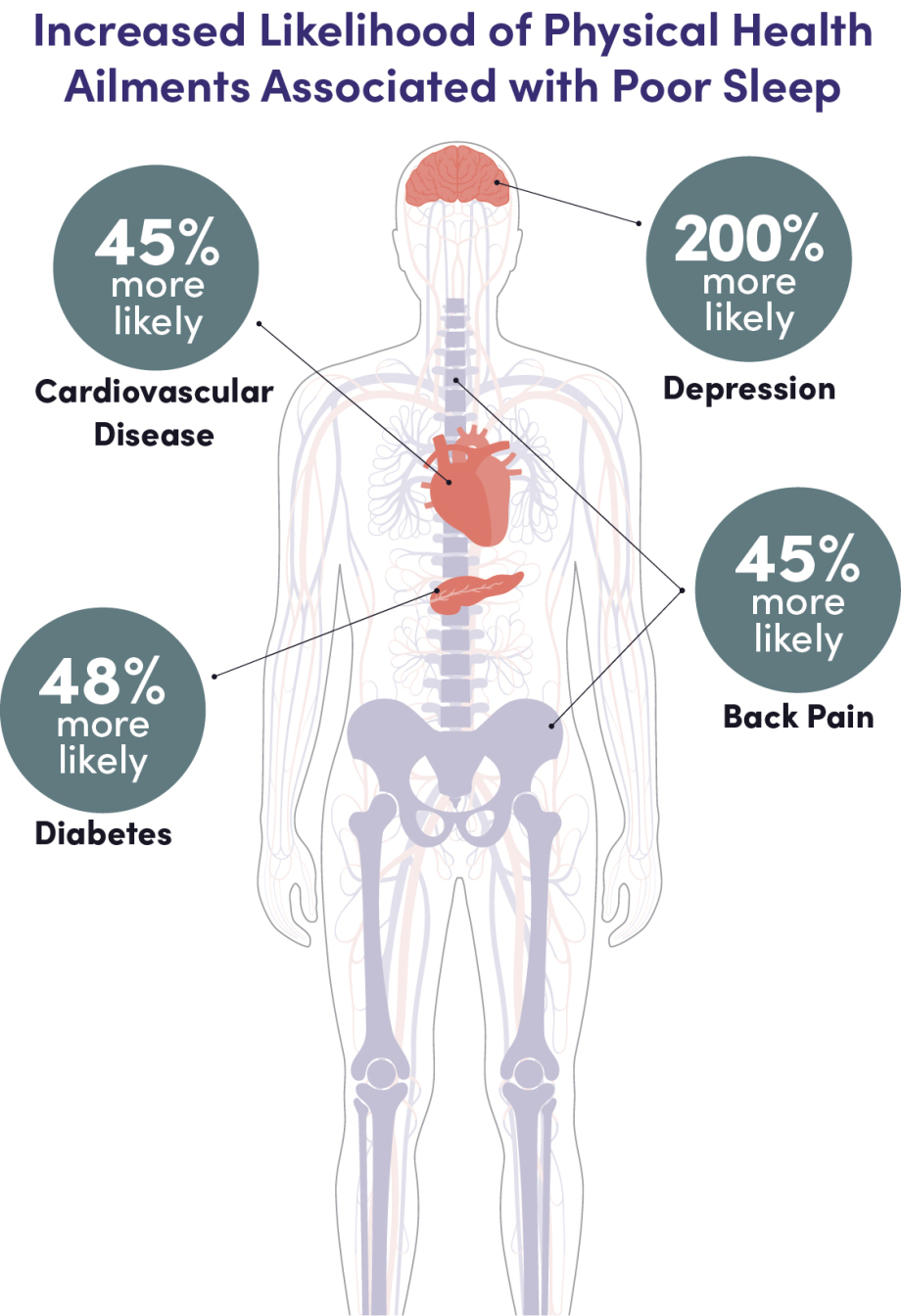4 Ways Poor Sleep Is Affecting Your Healthcare Costs
Sleep is essential for maintaining all components of our health. Poor sleep is often a predictor of and a contributor to much more serious, long-term health conditions.
Sleep issues are associated with an increased incidence of conditions that are the largest drivers of healthcare expense in the U.S., including:
Cardiovascular disease
Diabetes
Chronic pain (e.g., back pain)

Additionally, sleep apnea is both a condition on its own and a contributor to some of the health conditions above.
For self-insured employers, poor sleep could be directly contributing to healthcare costs by exacerbating common, costly conditions. With healthcare costs consistently rising each year, managing spend depends on controlling costs and improving employees’ overall health.
Continue reading to learn how poor sleep may be a key driver behind rising healthcare costs.
1. Cardiovascular Disease & Sleep
When considering the impact of poor sleep on health, its impact on cardiovascular health cannot be ignored. Heart disease is the leading cause of death in the United States and costs an estimated $219 billion each year in healthcare costs, pharmaceuticals, and lost productivity.
Sleep disorders are a major risk factor for cardiovascular diseases. Having insomnia increases the risk of developing or dying from cardiovascular disease by 45%. Even one night of reduced sleep results in increases in heart rate and blood pressure, causing the heart to work harder.
2. Diabetes & Sleep
Poor sleep is associated with the development of Type 2 diabetes, as sleep problems are linked to glucose intolerance and insulin resistance, both associated with diabetes risk.
Short sleep, difficulty initiating sleep, and difficulty maintaining sleep all contribute to an increased risk of developing Type 2 diabetes:
Short duration of sleep (less than 5-6 hours) was associated with a 28% greater risk of developing type 2 diabetes,
Difficulty initiating sleep was associated with a 57% greater risk of type 2 diabetes,
Difficulty maintaining sleep was associated with an 84% greater risk of type 2 diabetes
Looking at the prevalence of diabetes in the US, more than 34 million Americans, or 10% of the population, have Type 2 diabetes. From a financial perspective, this disease costs $327 billion per year in direct medical costs and reduced productivity.
3. Pain & Sleep
Troubled sleep can both exacerbate pain and be caused by pain. In one study, 35% of poor sleepers and 63% of insomnia sufferers report back pain, versus 18% of good sleepers. In the Goodpath Employer Health Index (GEHI) Sleep Assessment data, 1 in 5 people experienced disturbed sleep because of pain.
Musculoskeletal (MSK) pain, including back pain, is the largest source of expenditure in US healthcare. In 2016, employer-paid treatment of MSK pain was $190 billion. In 2021, employers will spend more than $320 billion treating MSK pain. Poor sleep also increases the risk of developing a pain condition by 200% to 300%.
4. Obstructive Sleep Apnea
Obstructive sleep apnea (OSA) is a serious medical condition that comes from breathing periodically stopping during sleep. OSA increases the risk of developing:
In a global review from 2020, it was estimated that 1 billion people have obstructive sleep apnea. In a random sample of data collected by Goodpath from September 2020 - February 2021, 54% of respondents were at risk for sleep apnea.
OSA is associated with significant economic costs borne by multiple stakeholders, including employers and insurance companies. A white paper commissioned by the American Academy of Sleep Medicine estimated the total societal-level costs of obstructive sleep apnea to exceed $150 billion per year in the United States. This includes $87 billion because of lost workplace productivity, $30 billion because of increased healthcare use, $26 billion because of motor vehicle crashes, and $6.5 billion because of workplace accidents and injuries.

With sleep intricately linked to common, costly health conditions, it is in the best interest of employers to include sleep as part of larger efforts to improve employee health. Accessing proper sleep treatment programs is paramount for employers who wish to manage healthcare costs.
This article is part of our larger series on sleep and its role in employee health. Continue here for statistics and details on how sleep affects mental health.
For more information on sleep and its relationship to employee health and workplace productivity, access the full Sleep & Its Role In Employee Health report here. You can also access the Improving Employee Sleep Action Plan here.
